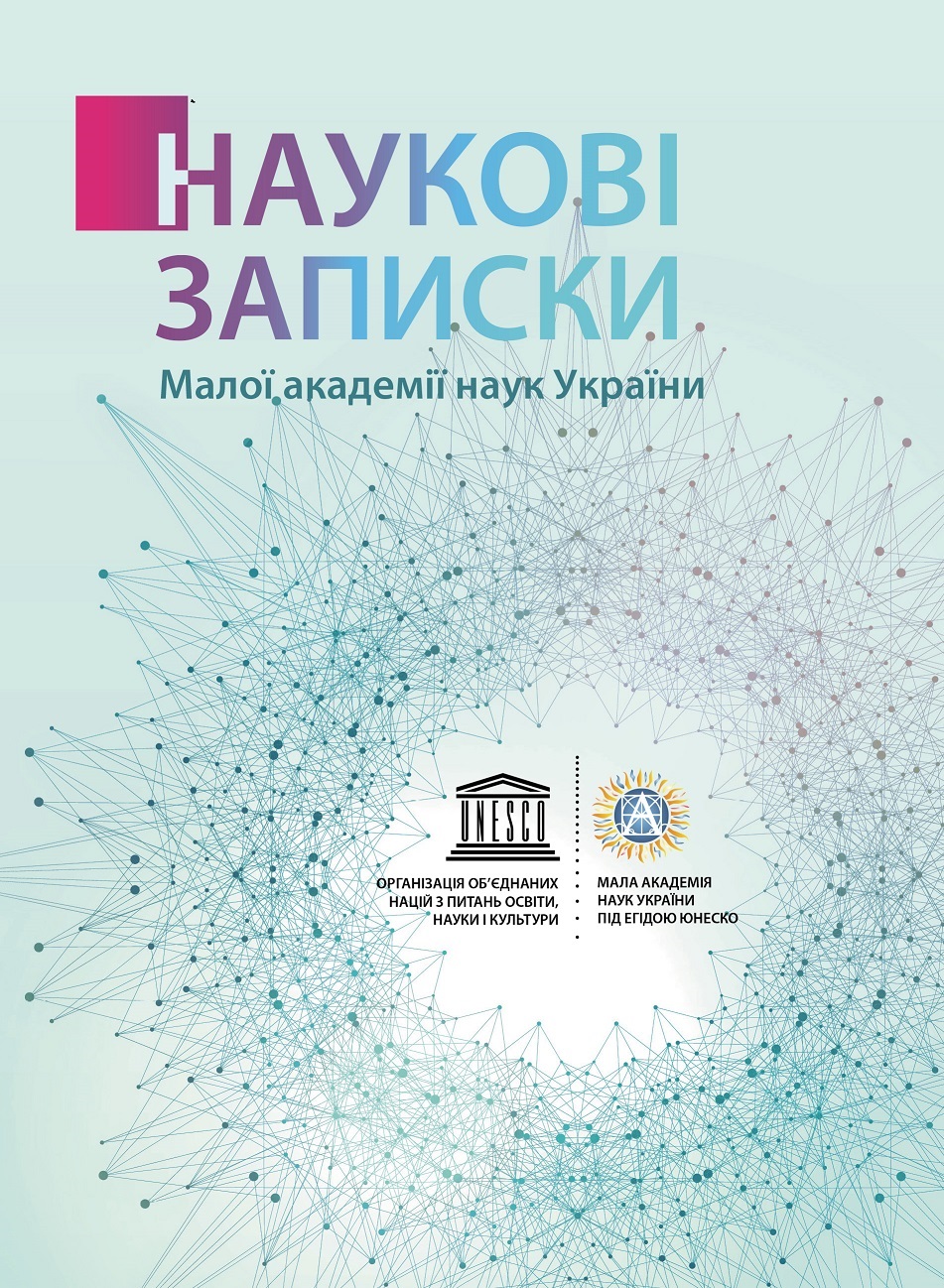STEM CONCEPT IN THE WORK OF THE MATERIALS RESEARCH GROUPS OF THE SMALL ACADEMY OF SCIENCES
DOI:
https://doi.org/10.51707/2618-0529-2020-19-02Keywords:
competence, competence approaches, out-of-school education, professional self-determinationAbstract
The article is devoted to STEM-direction, which gained world recognition as one of the main modern reformative tendencies in the natural and technical education field. The experience of cooperation between the Junior Academy of Sciences of Ukraine and the Lutsk National Technical University in the field of extracurricular education is presented in the article. The materials science research program provides an integration of the content and methodology of the natural sciences, technology, engineering and mathematics, and logical thinking into collaboration and research. The purpose of the curriculum is to develop key and subject competencies of individual by means of scientific research in materials science. Doubtless advantage of the group is a possibility of doing numerous experiments related to the study of the structure and properties of substances and materials. Classes in the materials research group are aimed at developing the ability to analyze the tasks set, apply the acquired knowledge in practice, give the opportunity to formulate the experience, its implementation and processing of the obtained results. Presentations of scientific achievements at competitions develop students’ creative abilities and practical skills. It is established that the STEM approach to after-school learning promotes the effective development of scientific and technical creativity of students. Cooperation of Technical University and Small Academy of Sciences promotes the development of key and subject pupils competencies, the deepening of their knowledge and the development of new skills, professional self-determination. A significant argument for the efficiency is the numerous victories of pupils at competitions of scientific and technical creativity of students, such as “Intel-Eco”, “Intel-Techno”, “Future of Ukraine”, “Crystals”, competition-defense of scientific works of the Academy of Sciences.
References
Stryzhak, O. Ye., Slipukhina, I. A., Polikhun, N. I., Chernetskyi, I. S. (2017). STEM-education: main definitions. Informatsiini tekhnolohii i zasoby navchannia, 62 (6), 16–33 [in Ukrainian].
Wu, Y. T., Anderson, O. R. Technology-enhanced stem (science, technology, engineering, and mathematics) education. Journal of Computers in Education. 2015. № 2. P. 245–249. DOI: 10.1007/s40692-015-0041-2.
Hulai, O. I., Furs, T. V., Shemet, V. Ya. (2019). STEM-approach on natural disciplines studies at a technical university. Naukovi zapysky Maloi akademii nauk Ukrainy: zbirnyk naukovykh prats, 177 (1), 124–129 [in Ukrainian].
Awad, N., Barak, M. Sound, Waves and communication: students’ achievements and motivation inlearning a STEM-oriented program. Creative Education. 2014. № 5 (23). P. 1959–1968. DOI: 10.4236/ce.2014.523220.
Andriievska, V. M., Bilousova, L. I. (2017). BYOD Concept As A Tool Of STEAM Education Implementation. Fizyko-matematychna osvita, 4 (14), 13–17 [in Ukrainian]. 6. Honcharova, N. O. (2016). Using game technologies in STEM-education. Novi tekhnolohii navchannia, 2 (88), 160–163 [in Ukrainian].
Knorozok, L. M., Shevchuk, O. H., Shevchuk, M. O. (2019). Formation of critical-creative thinking of students by physical disciplines by methods of STEM-texnologis. Naukovi zapysky NDU im. M. Hoholia. Psykholoho-pedahohichni nauky, № 3, 57–64. DOI:10.31654/2663-4902-2019-РР-3-57-64 [in Ukrainian].
Kit, I. V., Kit, O. H. (2014). The development of STEM-education in school. Kompiuter u shkoli ta simi, 4, 3–5 [in Ukrainian]. 9. Savchenko, I. M. (2015). Implementation of STEM-education ideas by the National Center “Junior academy of sciences of Ukraine”. Naukovi zapysky Maloi akademii nauk Ukrainy: zbirnyk naukovykh prats, 7, 148–157 [in Ukrainian].
Bykovskyi, Ya. T. (2012). On the issue of teaching students in physical and mathematical circles of out-of-school educational institutions. Naukovyi chasopys NPU imeni M. P. Drahomanova, 36, 298–301 [in Ukrainian].
Barna, O. V., Balyk, N. R. (2017). Implementation of STEM-education in educational institutions: stages and models. STEM-osvita ta shliakhy yii vprovadzhennia v navchalno-vykhovnyi protses, 3–8. Retrieved from : http://elar.ippo.edu.te.ua:8080/handle/123456789/455 [in Ukrainian].
Stepura, O. M. Technology and modern engineering. Retrieved from : https://drive.google.com/file/d/0B3m2TqBM0APKT3h0aW41WG9LWG8/view
Loboda, P. I., Zasiedka, L. M., Minitskyi, A. V. (2016). Elective course curriculum. Technical sciences. Research aspect. Kyiv [in Ukrainian].
Hulai, O. I. (2015). Forming of competence qualities of future specialist by facilities of scientific and technical creativity of pupils. Zbirnyk naukovykh prats Kamianets-Podilskoho Universytetu im. Ivana Ohiienka. Seriia pedahohichna, 21, 24–27 [in Ukrainian].
Downloads
Published
How to Cite
Issue
Section
License
Copyright (c) 2021 Scientific nontes of Junior Academy of Sciences of Ukraine

This work is licensed under a Creative Commons Attribution 4.0 International License.













